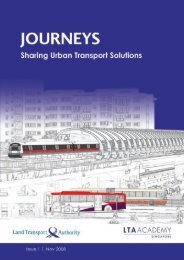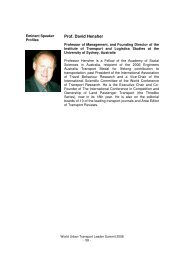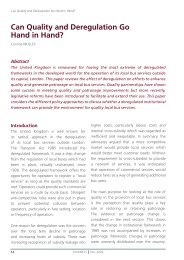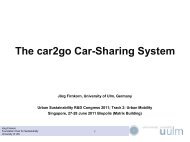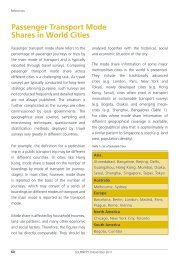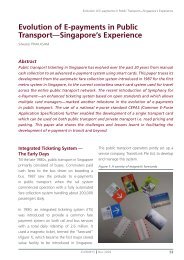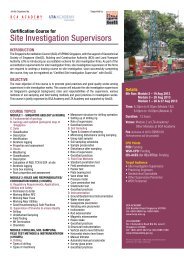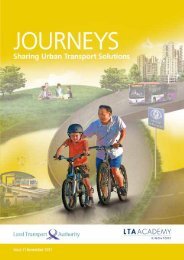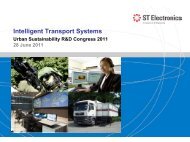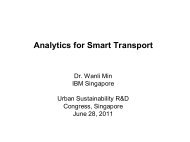journeys - LTA Academy - Land Transport Authority
journeys - LTA Academy - Land Transport Authority
journeys - LTA Academy - Land Transport Authority
Create successful ePaper yourself
Turn your PDF publications into a flip-book with our unique Google optimized e-Paper software.
Frequency and Connectivity | David HENSHER<br />
Public transport investment is being touted as a key springboard for<br />
a sustainable future, especially in large metropolitan areas with growing<br />
populations. Public transport, however, is very much multi-modal and should not<br />
be seen as a single mode solution as is so often the case with many ideologues.<br />
Hence, any commitment to improve public transport has a growing number of<br />
options to pursue. Enhancement in rail systems typically loom dominant in many<br />
strategic statements on urban reform (Sislak 2000; Edwards and Mackett 1996),<br />
ranging from heavy rail to metro rail and light rail. However there is a growing<br />
interest worldwide in making better use of the bus as a primary means of public<br />
transport, and not limited as a service that feeds a rail network (Hensher 1999,<br />
2007; Canadian Urban Transit Association 2004; Callaghan and Vincent 2007).<br />
In establishing a role for public<br />
transport, it should be enshrined in<br />
the motto of delivering “frequency,<br />
connectivity and visibility” that is<br />
value for money in terms of net<br />
social benefit per dollar outlaid.<br />
Connectivity refers to the provision of door-to-door services with minimum<br />
delay and almost seamless interchanges. Visibility is predominantly knowing<br />
where the mode is coming from and going to, and when.<br />
There are many ways in which bus transport can be developed as part of an<br />
integrated network-based public transport system (Hensher 2007a). The BRT<br />
systems in South America such as that in Curitiba, Brazil and TransMilenio in<br />
Bogota, Colombia (Menckhoff 2005) are good examples. BRT is “...a high quality<br />
bus-based transit system that delivers fast, comfortable, and cost-effective urban<br />
mobility through the provision of segregated right-of-way infrastructure, rapid<br />
and frequent operations, and excellent marketing and customer service. BRT<br />
essentially emulates the performance and amenity characteristics of a modern<br />
rail-based transit system but at a fraction of the cost. A BRT system will<br />
typically cost 4 to 20 times less than a light rail transit (LRT) system and 10<br />
to100 times less than a metro system.” (Wright and Hook 2007)<br />
26 JOURNEYS | Nov 2008<br />
In establishing a role for public<br />
transport, it should be enshrined in<br />
the motto of delivering “frequency,<br />
connectivity and visibility” that is<br />
value for money...



